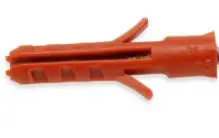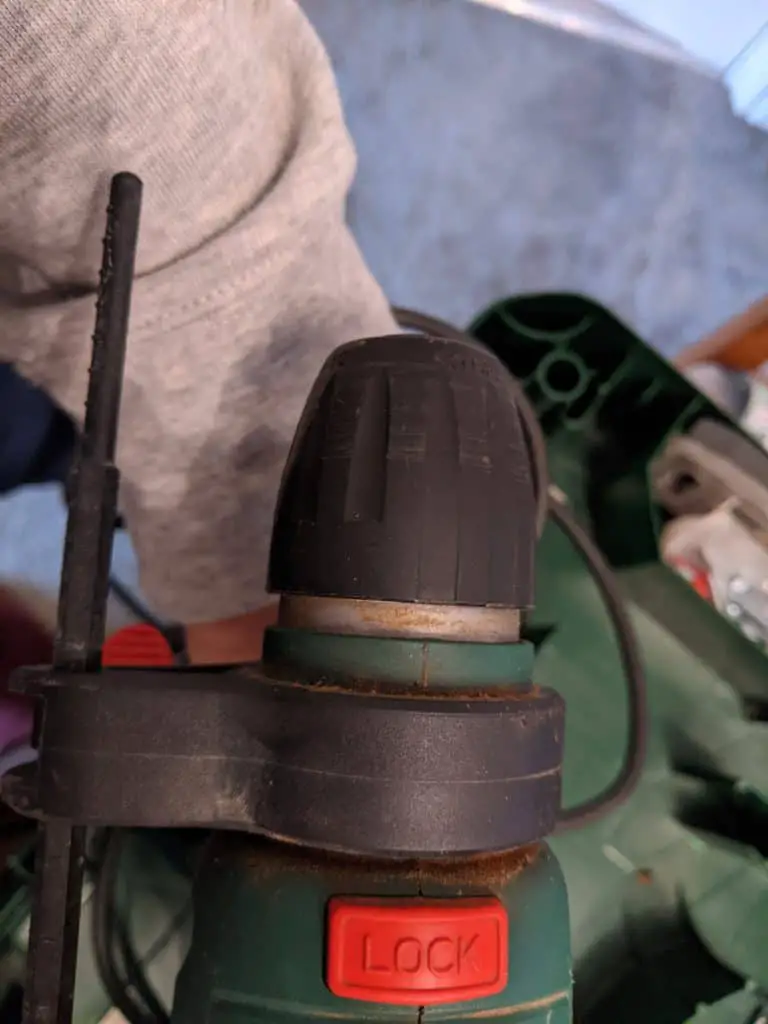Getting a screw to go into a wall/rawl plug can be difficult if the hole is tight. Wall plugs can come in many different sizes as well, so it’s important that choose the correct one. I’ve drilled holes too large, which meant I needed larger wall plugs to fill the or a fraction too small which has meant the raw plug gets stuck which is not ideal.
How to make sure that screw will go into the wall plug.
To make sure a screw will not get stuck in wall plugs the screw size must match the wall plug size. The screw will get stuck when the screw is too big for the wall plug. It is also important to make sure you use the correct wall plug for the wall that you are drilling into.
When you choose a screw, consider the weight of the object, as well as the function of the object. The weightier the object or expected weight the object is expected to carry e.g a shelf, the larger the diameter of the screw. Use thicker screws for heavier items basically. If you’re unsure – go for a thicker screw.
What is the diameter of a thick screw?
Well, screw sizes 11-14 constitute a thick screw and should be used for heavier objects.
Whenever you buy an item that needs hanging, there is usually some guidance as to what size screw or wall plug you should be using if you are unsure, here is a general guide:
- Internal doors should have a minimum screw size 8 (4.0 mm) screws.
- A shelf of any size should have a minimum of screw size 8 (4.0 mm) screws.
- A regular picture frame (12-inch frame) – screw size 6 (3.5 mm) screws.
If in doubt go for a thicker screw then you should be ok. You may be thinking about the wall plug. It’s important to use the right type of wall plugs.
There are many different types of the wall plug, As a general rule
- Winged tipped wall plugs should be used in hollow walls

- Straight edged and universal plugs are better suited to solid walls

When it comes to drilling a hole for a wall plug, I always start off with a pilot hole which is a smaller drill bit that that rawl plug size. I then take a gradual approach increasing drill bit size and test the fit of the wall plug.

It’s important that the wall plug sits snug, but is not too difficult to tap in with a hammer.
If the hole is tight but the wall plug fits but very tightly, there may not be enough room for the screw to fit in. You can look to widen the drill hole by moving the drill around the hole, or alternatively change to a larger drill bit. Be careful though, you don’t want to widen the hole too much or you will risk the wall plug being too small, which will cause it to spin.
If you’re looking for more information including which wall plug corresponds with each size screw, here’s some guidance that you might find useful:
5 mm wall plugs (use for screw sizes 2.5-4.2 mm)
6 mm wall plugs (use for screw sizes 3.5 – 4.8 mm)
7 mm wall plugs (use for screw sizes 4.2 – 6.3 mm)
10 mm wall plugs (use for screw sizes 6.3 – 8 mm)
What do I do if I drill too large a hole for the wall plug?
Ok so you’ve got a couple of options if you’ve drilled too large a hole.
Try using a wall plug that is larger and an alternative screw that still fits the object that you’re looking to fit.
Alternatively, If you’ve drilled a hole that is just too big (don’t worry, it happens), you can use this product called wet n fix (link to amazon). Its essentially a disc that you wet, and wrap around the wall plug before you place it in the drill hole.
Within three minutes you should be able to tighten your screw, job done!
Do Wall/Rawl plugs need to be the same length as screws?
Wall plugs do not need to be the same length as screws. In fact it’s actually better if the screw goes all the wall through the wall plug, splits it and goes through the wall. It means that the screw has a tighter fit ultimately.
Should the drill bit be smaller than the Wall plug?
Drill bits are generally longer than wall plugs. You should aim to only drill the length of the wall plugs.
I have a really cool function on my drill called a ‘depth stop’ which is essentially a ruler that sits on the end of your drill that stops you from drilling too far. Here’s a picture of the depth stop on my drill.

The drill that you buy, ultimately can make the job of drilling the right hole a lot easier. I’m a fan of combi drills in general that allow you to toggle to an ‘Impact drilling’ function to allow you to drill through togher walls.
I’ve had my drill for years, but I have looked into drills on the market right now and you can check out my recommendations in my post on drills that I think are worth buying.
How much weight can wall plugs hold?
Wall plugs in general can hold 20-50 kgs in weight.The more wall plugs that you have screwed in for an object, the more weight can ultimately be held.
When drilling into hollow walls in particular its important to use the winged tipped wall plugs in my opinion as it gives the wall plug more structural integrity and strength.
In conclusion…
Hopefully you’re a bit clearer on how to avoid a screw getting stuck in a wall plug. Ultimately the cause of this if the drill hole is too tight for the screw.
You can choose to go for a smaller screw however this may comprise the strength of amount of hold. Alternatively you could opt to increase the size of the drill hole, but be careful here otherwise you may end up with a spinning wall plug, which you don’t want to be honest.
If this does happen though, not to worry it may be able to fixed easily such as the wet n fix solution mentioned above.
If you found this article useful, why not check out some more of my content. I’ve had a go at a few DIY jobs and I’ve jotted down my lessons learned.
Recommended articles:

